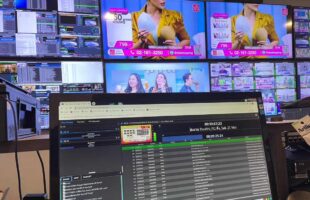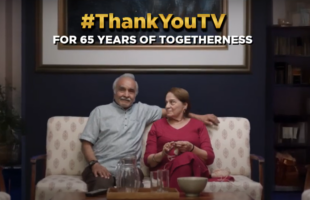As Subhash Chandra, pointed out last year, “the cable plant is the fattest pipe running into the consumer premises and once converted to digital offers the biggest bandwidth for all possible data, voice and video applications or triple play services.” It has the added advantage of transparency, which benefits the entire television broadcasting value chain. Digitization is inevitable if the cable medium as a platform for signal distribution has to compete with other delivery platforms. Progress Of the 91 million subscriber base, analog cable accounted for 68 million; followed by DTH (19 million), digital cable (four million) and IPTV (less than one million). In its consultation paper on tariff issues related to cable TV services in Non-CAS Areas, New Delhi-based regulatory body Telecom Regulatory Authority of India (TRAI) highlighted that the rest of the country (i.e. where digitization and addressability are not mandated) continues to remain largely in an analog cable-dominated environment. For its part, TRAI has been trying to gather factual information to understand the true state of the market and establish the presence of business pressures faced by various stakeholder groups. TRAI also looked at how regulators across more than 10 countries have responded to issues like pricing, addressability, carriage fee, a la carte provisions, effective competition and digitization in cable TV services. In its quest to assess the role of various stakeholders in the supply chain, the TRAI found that there are approximately 12,000 analog and digital headends currently used for downlinking channels in the country. It is estimated that around 3,000- 4,000 multi system operators (MSOs) are present in the Indian market. The MSO’s role is to downlink the broadcasters’ signals, decrypt any encrypted channels and provide a bundled feed consisting of multiple channels to the local cable operator (LCO). The role of the LCO in the supply chain is to receive a feed (bundled signals) from the MSO and retransmit this to subscribers in his/ her area through cables. As per industry estimates, there are up to 60,000 operators in the country. The business model is largely based on providing services to specific areas/ localities within a city. There is significant variation in the size of different LCO networks – ranging from less than 100 to over 10,000 subscribers. In all, the 60,000 operators service a total of 68 million analog cable households, at an average of 1,100-1,200 analog subscribers per operator. Recommendations According to TRAI, the following components would be required to successfully realize the digitization mandate: • A detailed digitization roadmap including established machinery to oversee the process o Pre-defined analog switch off/ cut-off date – which acts as a deadline for all non-digital operations to cease • Strong communication program to explain the benefits of digitization to all stakeholders (industry and consumers) • Clearly articulated action points for each stakeholder group to comply with the switch-off • Benefits/ incentives to support digitization (these could be fiscal incentives or policy changes) • Penalties for lack of compliance with digitization timelines An all-encompassing analog switch-off rather than a switchoff restricted only to pay channels, as currently in CAS areas, is envisioned so as to provide a level playing field to all broadcasters. It also needs to be understood that the cable sector has historically not been subject to licensing and monitoring requirements. However, the current needs of the market and extreme fragmentation at the last mile have brought to the fore a requirement to put these measures in place. TRAI, referring to licensing, says the objective of this initiative could be to ensure that growth of the industry happens in a structured fashion. The regime could cover the following areas: • Provide visibility on number of players operating in the market at the MSO and LCO level • Provide the right of way and license to operate • Differently structured licenses for the MSO (master distributor) and LCO (dependent). The question on whether dependent entities will be allowed to downlink certain channels directly is also to be addressed • Licenses may be defined at a market level – this level of market unit (e.g. district or state) should be consistent with the definition of market level adopted for measuring effective competition. This will allow for easy monitoring and ensuring competition. New developments The Ministry of Information and Broadcasting, Government of India, announced its Headend In The Sky (HITS) policy in November 2009. Soon after this, it also stipulated the guidelines for operating HITS services in India. The highlights of this policy include provision for distributors to access content from broadcasters on a nondiscriminatory basis and forHITS operators to further provide signals to MSOs /cable operators, who can in turn provide signals through their own cable networks to subscribers. As a result of this development, a HITS operator can now also provide passive infrastructure like transponder space, simulcrypting, multi-crypting to an MSO or group of LCOs. Further, the subscribers’ interest shall be ensured by the HITS operator through Subscriber Management Systems (SMS). It is believed that the above guidelines would further help promote the growth of digitization of television services through cable, by enhancing the overall customer experience. But it has emerged that a lot more needs to be done. According to some of the stakeholders, while conceptually the HITS platform is expected to help quicken the pace of digitization in the country, various issues which inter alia include the absence of a clear tariff and content policy led to a slower than expected roll out of the services. Despite such hiccups and slow conversion till date, the process of digitization is expected to pick up in the coming years. In its January-March quarter results, Zee Entertainment Enterprises indicated that there are almost 21 million subscribers on the pay DTH platforms. This base is expected to go up by anywhere between 9 to 10 million in the coming fiscal. In fact, the industry is looking forward to slightly higher numbers as well because of sporting activities which actually help sales. In the context of 9-10 million subscribers being added to the base of 21 million, one is looking at almost a 45 to 50% growth. Overall, it is estimated that in the next five years or so, pay TV homes would grow to over 115 million, thus indicating over a 50% growth. An estimated 54% of all Indian households will be pay TV subscribers by 2012 from the current 35% penetration.
Ad – Before Content
Related Articles
Massimo Righini appointed Chief Operating Officer of Casta Diva Pictures
ZEE5 Global annoucnes Black Friday deals of Up to 30% Off in key markets
PSI Broadcasting stays ahead of the game with PlayBox Neo MultiPlayout channel and branding systems
All3Media International prepares to showcase an array of formats and finished shows at Asia Television Forum 2024
Publicis India unveils heartwarming “Thank You TV” campaign for ZEE TV
Sphere Abacus sells true crime feature documentary Murder & Madness: The Cult Conspiracy to Prime Video






